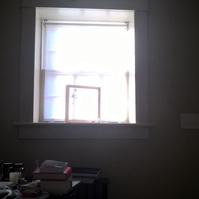CONTESTED BODIES
September 19, 2017CONTESTED BODIES
We are experiencing the decline of the
enlightenment project. The pillars of this project, based in Europe and the
United States, gave us the separation and dominance of reason over other ways
of knowing and placed humans in a position of dominance over nature. It
reiterated sexist notions of men’s dominance over women and racist and colonial
notions of Europeans’ dominance over non-European people. It promised a world
of light without darkness, an orderly park instead of a defiant forest, a
secular disenchanted world of logic, reason divorced from emotion, and a
radically self-contained modern self.
But these were promises that it could not
keep. The very effort was fraught with fear and anxiety. And this anxiety was
projected into a world that then needed to be controlled and dominated. This
included the apparent “other”—women, people of color, the disabled, and of
course, the earth itself.
john a. powell
In an era of mobile computing, the geographical separation
of Trinidad and Virginia (3400 km/2100 mi) can be interpreted as a form of
metaphorical remoteness. Whereas in the past, this distance preempted the
possibility of collaboration, today it becomes an illustration of a state of
apartness. Our collaboration explores connection and separation as they are
traceable to and emanate from the history of the New World, and the social,
cultural, political, and ethnic separation produced by that history. We materialize our
respective positions as Caribbean and American, person of color and white,
descendant of the colonized and descendant of the colonizer.
For contested bodies,
we continue to explore traditional methods like drawing and the printed image,
but also elemental materials like salt, blood, and sweat, in conjunction with
mirrors, found objects, text and handmade paper. The exhibition invokes ritual, cartography,
and magic through gestural installation strategies that call to mind postmodern
art approached like minimalism and arte povera.
In addition to conceptualizing distance as a material, we
also recognize the role despair plays in our sense of connection. Because we
both struggle with hopelessness, irony, humor and sincerity intermingle within
the work.The project allows us to build something within that general state of
pessimism, to make things out of it, to tame the despair by naming it and its
constituent pieces, but also to escape it or mock it.
This underscores the purpose of the collaborative project in
general: to bind our fates, to further forge our friendship, to ward off
depression, and perhaps to inoculate ourselves from the fruits of the seemingly
inexorable state of apartness characteristic of life today: anxiety, dread,
exploitation, alienation from self and other, shame, lost futures.
From our differing sides of DuBois’s color line, we attempt
to poetically interpret the sort of mechanisms by which power bewilders both
the oppressor and the oppressed, and consider how we might describe our
affective experience of such bewilderment. It’s our hope that through our use
of images, objects and gestures, we establish a lingua franca by which we might encounter, “talk back” to, and even
alter what James Baldwin once called “that historical creation, oneself.”
http://www.secondstreetgallery.org/index.php/exhibitions/detail/contested-bodies























